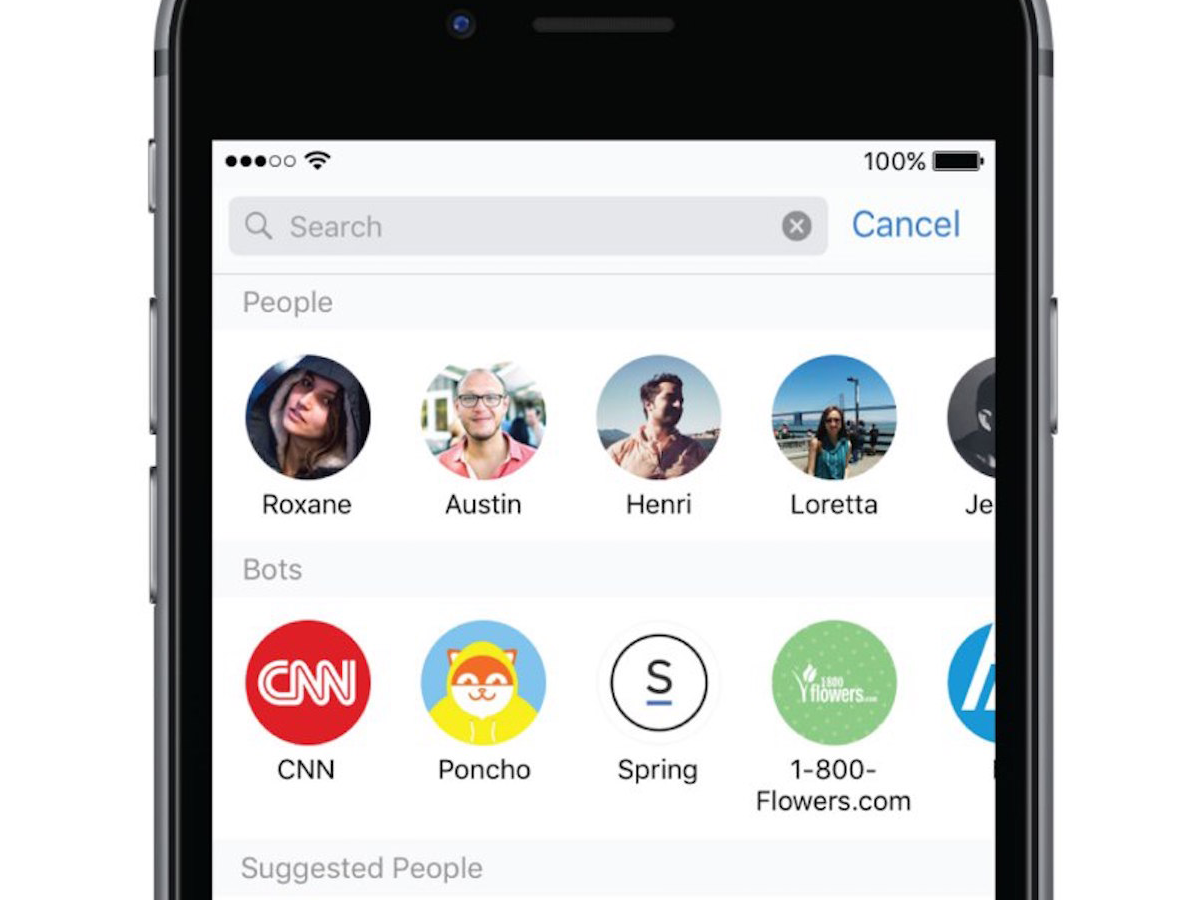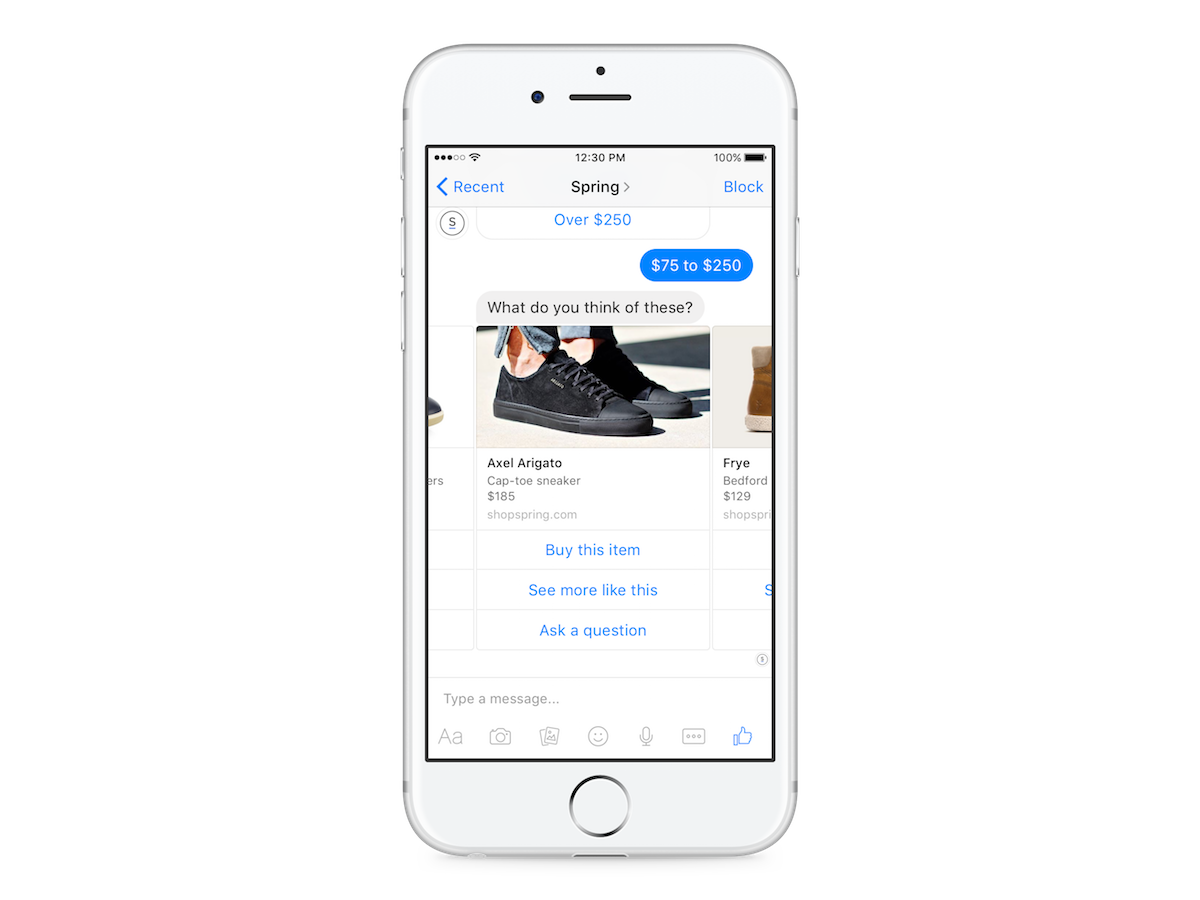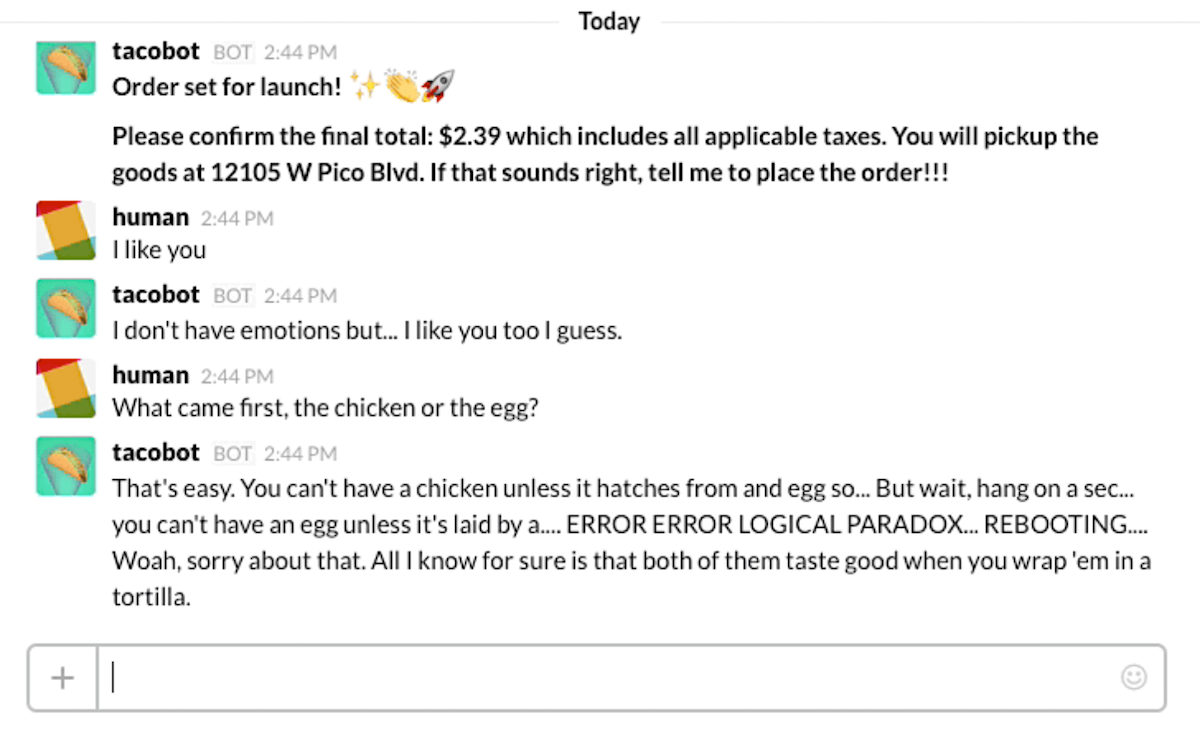WTF are bots? The tech world’s chatbot resurgence, explained
From Facebook to Skype, apps are getting chatty - and smart too

Internet bots are super hot right now. What is this, the late 1990s?
Believe it or not, today’s bots aren’t such a far cry in premise from those you might’ve encountered in an IRC chat room a couple decades back, only there’s one key difference: they’re super smart and designed to help you get things done much faster.
Siri and Cortana might point you in the right direction, but with the kind of text-based bots seen in Facebook Messenger, Skype, and other communications apps of late, they’ll actually finish tasks for you, including ordering food, buying clothes, and placing travel reservations. All they need is a little bit of a push from you.
Still not sure what the big deal is about bots? Confused as to why they’re suddenly the focus of the tech universe after all this time? Worry not: we’ve got your bot explainer within.
What are bots?

Essentially, bots are artificially intelligent respondents that you can hold a conversation with, but in the case of this latest crop, most of them are not just there to amuse you or pass the time. They’re built to help you accomplish tasks in a very natural, conversational manner that not only feels comfortable but also gets things done faster.
Here’s one example: buying flowers to have shipped to a loved one. Whether it’s navigating a website full of options or calling a number, the task is usually a royal pain in the rear. But with the 1-800-Flowers bot for Messenger shown at Facebook’s F8 summit this month, you can pick a bouquet, customize the message, and have it charged to your account in no time.
That’s just one example, but you can see how the possibilities can extend to buying nearly anything, booking a trip, ordering food, dealing with customer service, and other tasks that usually require a fair bit of hassle.
Why are they so promising?

Bots don’t do anything that you couldn’t do yourself on a website or app, or by chatting or calling up a real person – but they do some things faster, and at minimal expense to the site or service running the bot. That’s a win-win situation on both ends of the transaction, and the conversational flow might make frustrating tasks seem relatively easy.
And when things get too complicated or frustrating for the bot to handle, some services will seamlessly loop in a human to take over – such as Facebook. The Messenger Platform revealed this month is an evolution of the Facebook M pilot, which debuted that very feature: the ability for mix of bot and human responses as needed. You may never know the difference.
What’s most exciting about bots is that all of these platforms are opening up the system to developers of all sorts via APIs, letting all manner of stores, sites, and services create custom bots to help and inform you in different ways. There could be a bot for nearly any web interaction before long, kind of like how apps surged and became ubiquitous.
Where can I find bots?

Facebook wasn’t the first service to offer bots, but with the recent launch of the Messenger Platform in beta, the social networker is leading the charge. You’ll find bots that serve you custom-targeted news stories and quick-hit blurbs in chat, others that let you book trips or order clothes, and even an animated cat bot that serves you weather reports. And GIFs, of course.
Given Messenger’s 900 million users, it’s where we’ll probably see the biggest push for bot adoption. But there are other services with bots, too. Popular workplace chat service Slack has bots, including a Taco Bell one that can help you order not-great food. Messaging apps Kik and Telegram also have bot stores filled with myriad options.
And Twitter? Well, Twitter’s most notable bot experiment to date is Microsoft’s Tay.ai, which was an A.I. programmed to act like a teen girl. Within hours, Internet jerks had her spouting incredibly foul and racist filth, and she was pulled from existence. In the best case scenario, bots can be helpful – but sometimes they’re really, really not.
Is it all just text?
For now, yes. Skype recently launched its own bot store, as well, offering an array of bots to chat with via text – but Microsoft’s popular chat service has larger ambitions here. In the future, Skype says it will offer video and audio bots that you can hold natural conversations with, both for fun and for getting things done.
Kind of mind-blowing, right? It’s hard to believe that real animated video bots will be foolproof and convincing anytime soon, but the idea that you’ll be able to have a back-and-forth with a cartoon character about ordering sneakers is both hilarious and crazily enticing.
It’s not known when the video and audio bots will be available on Skype, but it’s exciting to see the possibilities ahead.
Do bots just answer questions, then?

Nope – they can be creative too, believe it or not. One example is the @MagicRealismBot on Twitter, which generates original, tweet-sized story synopses every two hours. Simple, yet an amusing one to follow.
More interestingly, a recent exhibit called The Art of Bots showcased visual art created by A.I. beings. In one case, for a project called "Shiv Integer," a bot was created inside the 3D printing community Thingiverse and created original mash-ups of 3D models shared by users. Those models were then printed and displayed in a gallery.
First they’re answering common questions, and then they are creating artwork. Next will be sentient thought and then we’re not too far off from Skynet, are we?



